RCDE Stadium (Estadi Nou Sarria)
| Capacity | 38 529 |
|---|---|
| Country | Spain |
| City | Cornellà de Llobregat / El Prat de Llobregat |
| Clubs | RCD Espanyol de Barcelona |
| Other names | Estadi Cornellà-El Prat (2009–2014), Power8 Stadium (2014–2015), RCDE Stadium (2016–2023), Stage Front Stadium (2023–2024) |
| Inauguration | 02/08/2009 (Espanyol – Liverpool FC, 3–0) |
| Construction | 11/2005 – 06/2009 |
| Cost | €83 million |
| Rercord attendance | 40,240 (Espanyol – Real Madrid, 13/02/2011) |
| Design | Fenwick Iribarren Architects, Gasulla Arquitectura |
| Contractor | FCC Construcción, Copisa |
| Address | Avinguda del Baix Llobregat, 100, 08940 Cornellà de Llobregat |
Advertisement
RCDE Stadium – stadium description
What is the RCDE Stadium like in a nutshell?
The creation of Espanyol's new stadium is linked to the club's sale of the Estadi de Sarrià, a facility that served the team for many years. In order to get out of debt, Espanyol gave it to real estate developers in 1997 and moved itself to the Estadi Olímpic de Montjuïc, which, however, did not meet the club's expectations from the beginning, so steps were soon taken to make Espanyol have its own stadium again.
A plot of land for the stadium was found in the western suburbs of Barcelona, on the border of the municipalities of Cornellà de Llobregat and El Prat de Llobregat. The land was purchased in 2002, but bureaucratic procedures and other obstacles slowed down the project. Construction began in November 2005, although it didn't go into full swing until late 2006/early 2007.
The stadium opened for business on August 2, 2009, with a friendly match against FC Liverpool. Espanyol's new home can hold just under 40,000 spectators (the vast majority of seats under the roof), is very modern and energy efficient, and was relatively inexpensive. The stadium houses the club's headquarters, as well as a club store and museum, and... a columbarium.
The facility already had two title sponsors, but each time the contract was terminated prematurely.
How did the RCDE Stadium come to be?
Founded in 1900, RCD Espanyol in its early days often changed the stadiums in which it played. It wasn't until the new Estadi de Sarrià was built in late 1922 and early 1923 that the club gained a facility that served it for decades. Over the years, the stadium was expanded, reaching a capacity of 44,000 spectators.
The stadium was considered atmospheric and difficult for rivals, and was located about 2 km from Camp Nou, the venue of the derby rival (FC Barcelona). Among other things, Estadi de Sarrià hosted three matches of the 1982 World Cup and five matches of the football tournament during the 1992 Olympics. However, due to Espanyol's mounting financial problems, the club was eventually forced to sell it to real estate developers, who erected new buildings in its place.
The last match at the Estadi de Sarrià was held on June 21, 1997, after which Espanyol moved to the city-owned Estadi Olímpic de Montjuïc. However, this was a facility with an athletic track, where the atmosphere was far from that of the old stadium, and in addition Espanyol had to rent it. Therefore, the club quickly made efforts to build a new venue.
Where was the RCDE Stadium built?
In 2002, Espanyol bought 18.2 hectares of land in the western suburbs of Barcelona (less than 10 km west of the center), where it intended to build a new stadium. The area, known as Plana del Galet, is located on the border of two cities, Cornellà de Llobregat and El Prat de Llobregat. Historically, there was a meander of the Llobregat River at this location, which formed the administrative boundary between the municipalities.
Due to frequent flooding, the riverbed was regulated in 1972, moving the river a piece to the south at this location, but the administrative boundary retained its former course. The location on the border of the two cities was later reflected in the name initially used for the new stadium (Estadi Cornellà-El Prat).
What were the preparations for the construction of the RCDE Stadium like?
Espanyol's plan was to sell off part of the plot to a private investor who could build a large shopping and entertainment center at the site. The money raised from the transaction was to be enough to build a new stadium.
Back in 2002, Espanyol held an international competition for the design of the new stadium, which was won by Fenwick Iribarren Architects and Gasulla Arquitectura. The winning concept (which differed from the later, final version) was presented to the wider public in March 2003.
In 2003, the club sold part of the plot to Grupo Lar and Grosvenor, who were to build a shopping center at the site. The cost of the land purchase was €39 million, which was to be more than enough for Espanyol to build the stadium (the cost of its construction was estimated at the time at €36 million).
On May 9, 2003, the cornerstone was laid for the new stadium, which was then expected to be ready as early as 2005, but protracted procedures and negotiations with the authorities made it difficult to complete the project quickly.
Espanyol's new facility was to be built partly on the site of a modest stadium with a rugby field and athletics track, and as a result, the stadium was planned to be dismantled. However, that stadium was to be reconstructed elsewhere, a piece to the west (behind the tennis courts). Construction began on December 22, 2004, and the opening took place on January 15, 2006. Since 2018, the facility has been known as Estadi Municipal Pilar Pons.
When was the RCDE Stadium built?
On January 26, 2005, the club announced that Fomento de Construcciones y Contratas (FCC) would be the main contractor for the stadium. The final version of the design for Espanyol's new stadium was presented on October 5, 2005. On November 21, 2005, a contract was signed with the main contractor, FCC, as well as Copisa, which were to build the facility within 18 months so that it would be ready for the start of the 2007/08 season. Construction at that time was already expected to cost €58 million.
The first machines entered the site on November 30, 2005. However, bureaucratic problems (such as the fact that one of the corners was to be located on El Prat municipality land, while the rest of the stadium was to stand on Cornellà city grounds) meant that only preliminary work was done for the first year after the contract was signed.
All obstacles were overcome in November 2006, and then the actual construction could begin. Piling of the site began on January 8, 2007, with the foundations ready in September 2007 and the entire reinforced concrete structure in March 2008.
However, the completion date set for July 2008 could not be met and was later postponed several times. Construction was also hampered by cyclone Klaus, which caused damage to the roofing of the main stand in January 2009.
When was the RCDE Stadium inaugurated?
The ceremony marking the completion of construction work and the handover of the facility to the club took place on June 5, 2009. On July 13, 2009, fans, numbering about 7,000, entered the stands of the new stadium for the first time for the presentation of new player Shunsuke Nakamura. On July 19, 2009, a test friendly tournament was held at the stadium with the participation of veteran teams of Espanyol, UE Cornellà and AE Prat.
The actual inauguration of the new stadium was a friendly match between Espanyol and England's FC Liverpool, played on August 2, 2009 and won by the hosts 3–0. Meanwhile, the first league match in the new facility was held on September 12, 2009 (Espanyol – Real Madrid 0–3).
How much did the RCDE Stadium cost?
The construction of the stadium eventually cost €62 million, and together with the infrastructure around the facility, the cost was €83 million. The club covered the construction expenses with its own funds, largely through the sale of a piece of land for the construction of a shopping center, for which it received €39 million. As the costs turned out to be higher than initial expectations, bank loans were used to finalize the budget.
How was Espanyol's captain, who died shortly after the stadium opened, honored at RCDE Stadium?
In the opening match against Liverpool, a club alumni, Dani Jarque, who had been named team captain not long before, played for Espanyol. A few days after that game, at a training camp in Florence, Jarque suffered a heart attack and died prematurely, at the age of 26.
Shortly after the player's death, there were claims that the new stadium should be named after him. In the end, such a decision was not made, but in April 2010, the entrance to the stadium number 21 (this was the number on Jarque's jersey) was named in his honor: Puerta Dani Jarque.
The tribute to the short-term Espanyol captain was paid in a rather spectacular way by Andrés Iniesta (an FC Barcelona player, but a friend of Jarque's), who, after scoring the winning goal in overtime of the 2010 World Cup final against the Netherlands, pulled off his jersey, under which (on the undershirt) was written “Dani Jarque siempre con nosotros” (“Dani Jarque always with us”). On November 11, 2010, Iniesta donated this shirt to Espanyol.
On January 21, 2012, a bronze sculpture of Dani Jarque was unveiled in entrance 21. Iniesta's shirt from the World Cup final is also on display near the sculpture. A replica of the sculpture was also unveiled on October 21, 2013 at Espanyol's training facilities, which likewise bear the player's name (Ciudad Deportiva Dani Jarque).
What does the RCDE Stadium look like?
The stadium's stands have a rectangular layout (with slants in the corners), matching a football field. The auditorium is divided into two floors, between which there is a central balcony designed for lodges. The capacity of the stands is just under 40,000 spectators.
The stands are equipped with folding seats of uniform blue color. In the eastern stand, a small number of white seats are arranged in the name of the club. The facility also has places for the disabled. Relatively small video screens are placed in two of the corners.
Above the auditorium is a roof, the main structural element of which is made up of four huge lattice girders, two running along the length of the pitch and two situated laterally. The girders are located under the sheathing and are quite prominently displayed inside the stadium. Floodlights are attached to the girders.
The roof covers 92.5% of the auditorium (it was not decided to cover the upper parts of the corners). Due to the clearances between the sheathing and the stands, as well as due to the support of the structure at points along the top of the stands only, one gets the impression that the roof is floating above the audience.
The flat roof in the northern and southern parts (above the stands behind the goals) is covered with 2,720 photovoltaic panels, which not only meet the stadium's electricity needs but also produce surplus electricity, bringing additional income to the club.
From the outside, the stands are surrounded by a development with an oval contour. The façade of the development is clad in translucent panels, mostly in shades of blue, which can be illuminated at night. In 2024, a multimedia screen was installed on the southern façade, which is well suited for displaying advertisements, as it is highly visible from the nearby highway.
Stadium facilities include Espanyol's offices, a club store and museum, as well as hospitality areas. The stadium features high standards and elegant interior design. In entrance 21 stands a sculpture depicting Danie Jarque, Espanyol's prematurely deceased captain.
Is it possible to take a tour of the RCDE Stadium?
The stadium does offer tours, and during the tour you can see the players' locker rooms, the conference room, walk through the tunnel leading to the pitch or visit the museum.
What is unusual about the RCDE Stadium?
Collective tomb
One of the interesting features is the columbarium (collective tomb) that is located in the stadium, known as the “Espai Memorial”. This is a place where an urn with the ashes of the deceased can be deposited for a fee, dedicated especially to the burial of fans and people associated with the club.
Aerodynamic tunnel
In December 2019, a new attraction, Windoor Barcelona, opened at the northwest corner of the stadium: a wind tunnel in which a strong jet of air creates similar conditions as would be experienced by a parachute jumper. Once inside the tunnel, you can break away from the floor and fly above the ground.
Location on the border of two cities
The administrative border between the municipalities of Cornellà de Llobregat and El Prat de Llobregat literally runs through the stadium. It has a built-up area of 81.16 thousand m², with 50.65 thousand m² located in Cornellà and 30.51 thousand m² in El Prat.
Sustainability
The stadium is characterized by high energy efficiency (low consumption, own production of solar energy and low water requirements). With relatively low investment costs, very good quality/price ratio has been achieved, resulting in the facility receiving the Stadium Business Award for best stadium in 2010.
Where is the RCDE Stadium located?
The stadium is located in the western suburbs of Barcelona (less than 10 km from the center of the metropolitan area), on the border of the municipalities of Cornellà de Llobregat and El Prat de Llobregat – though much closer to the built-up area of the city of Cornellà. The A2 highway runs right next to the stadium, and the Llobregat River flows a piece behind it. The venue is also relatively close to Barcelona-El Prat airport.
Despite its location some distance away from the center of Barcelona, the stadium is well connected thanks to its proximity to the highway and major road junctions. There is also the Cornellà Riera underground station near the stadium, served by metro Line 8, as well as regional rail trains.
What is located in the RCDE Stadium's surroundings?
The facility is adjacent to the Splau shopping and entertainment center, as well as a number of other sports facilities that stretch across the strip of land between the Avinguda del Baix Llobregat and the A2 highway.
What facilities are located near the RCDE Stadium?
Behind the east stand is the Splau shopping and entertainment center. The center opened on May 11, 2010, shortly after the inauguration of the stadium itself. The mall houses stores, restaurants and a cinema. It is one of the largest shopping centers in Catalonia.
In front of the north stand is a small square, and there is a monument dedicated to Espanyol fans, unveiled on October 28, 2012.
To the west of the stadium stands another, much more modest football facility (Estadi Nou Municipal de Cornellà), inaugurated on August 26, 2012. The facility has one stand and can accommodate 1,500 spectators. The UE Cornellà football club plays its matches there.
A little farther away stands Parc Esportiu Llobregat (PELL), a sports and recreation complex that includes a sports hall, as well as a swimming pool with a covered and outdoor section. The complex was put into operation on January 9, 2006.
Even farther west is a school (Institut Miquel Martí i Pol), and behind it is a tennis complex (Centre Internacional de Tennis de Cornellà) owned by the Catalan Tennis Federation.
Behind the tennis courts is a modest stadium with a rugby field and athletics track (Estadi Municipal Pilar Pons). This facility was originally located on the site where Espanyol Stadium was later partially built (due to the development, a small stadium was built anew a piece to the west). Its host is Rugby Club Cornellà.
What is the name of Espanyol's stadium?
Espanyol's new stadium was initially named Estadi Cornellà-El Prat (the name referred to the stadium's location on the border of two municipalities, Cornellà de Llobregat and El Prat de Llobregat). Shortly after the opening, when Espanyol's captain Dani Jarque died prematurely, there were calls to name the new stadium after him, but in the end no such move was decided.
From the beginning, the club wanted to find a title sponsor for its stadium, but the deal for the naming rights was not announced until June 2014. The partner became the IT technology provider for betting operations, Power8, and the facility was named Power8 Stadium from the 2014/15 season.
The deal was for a period of 7 years, but in 2015 reports of problems and then bankruptcy began to surface for Power8. At the end of 2015, the club announced the severance of the partnership, and the facility, until a new sponsor could be found, was renamed RCDE Stadium (RCDE stands for the club's expanded name: Real Club Deportivo Espanyol).
The conclusion of another deal for the stadium's naming rights was announced in June 2023, with a 5-year contract signed with Stage Front, a company specializing in the ticketing industry. However, as early as July 2024, the club issued a statement that the cooperation was broken due to the failure to receive payment. Thus, after a year, the name was reverted to RCDE Stadium.
Due to the sentiment for the old Estadi de Sarrià, which served Espanyol for many years, the new stadium sometimes is also called Estadi Nou Sarrià (new Estadi de Sarrià).
Who does the RCDE Stadium serve?
The stadium primarily serves Espanyol's football team, which regularly plays its matches there. Among the most anticipated ones are, of course, the derby against FC Barcelona. In addition, the stadium occasionally hosts other events, including national football teams' matches. The Spanish national team made its first appearance at the facility on March 26, 2022, when it faced Albania in a friendly (2–1).
The stadium also hosts music concerts and other events. The facility (both the pitch with stands and the premises inside) is available for rent for various events, banquets or conferences.
How RCDE Stadium compares to other LaLiga stadiums?
Advertisement
Pictures
-

02.03.2012 © Michał Koliba 
14.03.2015 © Jörg Pochert 
02.03.2012 © Michał Koliba 
02.10.2011 © Victoriano Javier Tornel Garcia (cc: by-nc) 
02.10.2011 © Victoriano Javier Tornel Garcia (cc: by-nc) 
13.08.2011 © Stadiony.net 
13.08.2011 © Stadiony.net 
13.08.2011 © Stadiony.net 
13.08.2011 © Stadiony.net 
13.08.2011 © Stadiony.net 
13.08.2011 © Stadiony.net 
13.08.2011 © Stadiony.net 
13.08.2011 © Stadiony.net 
13.08.2011 © Stadiony.net 
13.08.2011 © Stadiony.net 
13.08.2011 © Stadiony.net 
13.08.2011 © Stadiony.net 
05.09.2009 © Elemaki (cc: by) 
10.05.2011 © Pure-football (cc: by-sa) 
13.08.2011 © Stadiony.net 
13.08.2011 © Stadiony.net 
14.03.2015 © Jörg Pochert 
14.03.2015 © Jörg Pochert 
14.03.2015 © Jörg Pochert 
20.02.2016 © groundhopping.se 
20.02.2016 © groundhopping.se 
20.02.2016 © groundhopping.se 
14.03.2015 © Jörg Pochert 
14.03.2015 © Jörg Pochert 
02.03.2012 © Michał Koliba 
02.03.2012 © Michał Koliba 
02.03.2012 © Michał Koliba 
02.03.2012 © Michał Koliba
Related news
2025
-
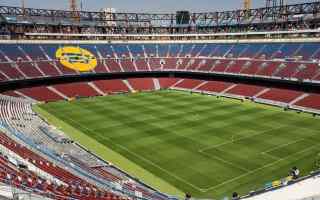
Spain: 10 days until final decision on Camp Nou, Monday will be crucial
The Camp Nou must be ready by August 28 for FC Barcelona to play the Champions League there. The Blaugrana team wants to receive a certificate of completion on Monday so that permits can be obtained in time.
-
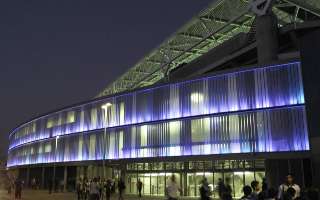
Spain: Surprise at the election of La Liga best stadium
Not the Santiago Bernabéu, not the Estadio Metropolitano or the Estadi Montjuïc. The association of Spanish fans awarded the title of best La Liga stadium last season to... RCDE Stadium.
-
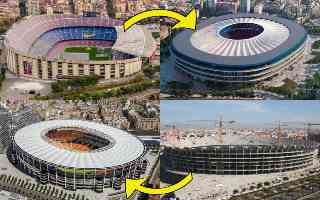
Spain: Dynamically evolving Spanish stadiums
A revolution is taking place in Spanish football stadiums. The latest video on the EstadiosDB channel, available in Spanish, takes viewers on a journey through arenas that have undergone profound transformations in recent years—not always spectacular, but always meaningful. From modest modernisations to major rebuilds, each stadium tells its own story.
-
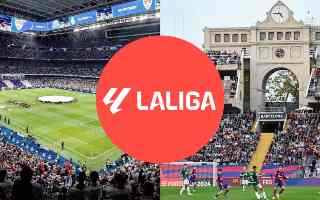
Spain: Attendance at La Liga stadiums in the 2024/25 season
Attendance at La Liga stadiums this season once again broke all records. Most fans came to the Santiago Bernabéu, but it was Barcelona's temporary stadium that was most full. The stadiums of Espanyol, Las Palmas and Getafe were regularly empty.
-
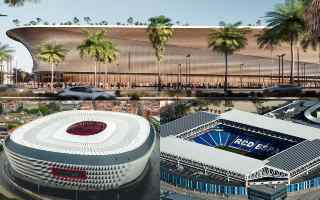
Spain: New La Rosaleda will be more expensive than San Mamés
The regional government, City Council and Province Deputation have prepared a draft agreement detailing the costs of the Nueva Rosaleda. The cost will be higher than that of the RCDE Stadium and even San Mamés, but politicians are hopeful that Málaga will join in the investment as co-owner of the stadium.
-

Spain: We’re launching in Spanish! A new YouTube channel
Some time ago, we quietly launched our new YouTube channel in Spanish – EstadiosDB. In the first full-length video, we present a ranking of the LaLiga 2024/25 stadiums, from Vallecas to Santiago Bernabéu, with an in-depth analysis of each venue.
-
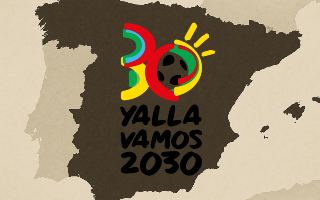
World Cup 2030: Spanish bid, shaken by insecurity, is in FIFA's hands
Shaken by the stadium evaluation affair, the Spanish bid for the 2030 World Cup faces even more challenges in the future. The pressure from Valencia, the problems of Riazor and La Rosaleda and the rising costs cause uncertainty and forecast a fight till the end, which will come with FIFA's decisions.
-
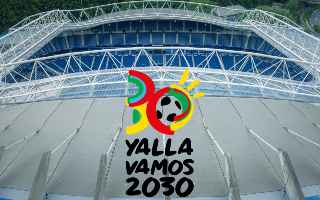
Spain: RFEF closes the “evaluation case” with no changes on World Cup stadium list
Maria Tato has broken her silence. The member of the Spanish World Cup bid, already dismissed from the Spanish federation, denounces that the recordings have been manipulated, and the score of Estadio Anoeta was corrected after an "error". The RFEF has decided not to change the venues and president Rafael Louzán distances himself from the case.
2024
-
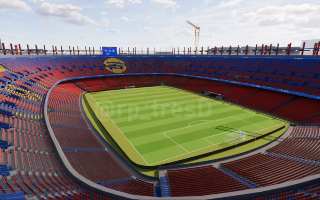
Spain: Camp Nou unfinished. FC Barcelona searches for another temporary stadium
The FC Barcelona board acknowledges that the first team will not return to Camp Nou this season unless a miracle occurs, though no one believes in such a possibility anymore. Construction work is progressing slower than anticipated, and many issues remain unresolved.
-
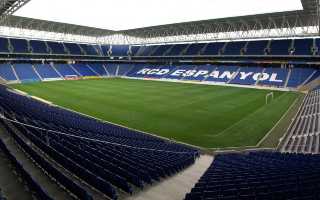
Spain: Espanyol stadium following in Bernabéu's footsteps; another blunder by the artist
All that's left of Lola Indigo's Stadium Tour for the moment is a single concert at Estadio La Cartuja. A week after Real Madrid took down the announcement of the concert at the Bernabeu, Espanyol followed suit with Los Blancos. Promoters responded with a strong announcement.
-
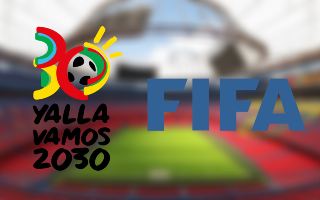
FIFA: World Cup 2030 stadium evaluation. Camp Nou in the lead
Of the 23 stadiums to host the 2030 World Cup matches, as many as 14 either exist only on paper or will undergo deep redevelopment before the tournament. Nevertheless, FIFA has evaluated each of them before the Extraordinary Congress, which will already make its final decision on December 11. Also the one about the final arena.
-
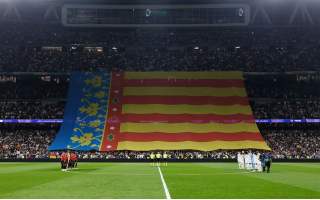
Spain: Spanish football unites to help Valencia after tragic floods
Although many players and coaches asked to suspend all the matches of the last week due to the tragedy caused by the “cold drop” weather phenomenon, La Liga authorities decided to cancel only the matches in the affected areas. Even so, the stadiums ceased to be just temples of football to become examples of solidarity with the survivors.
-
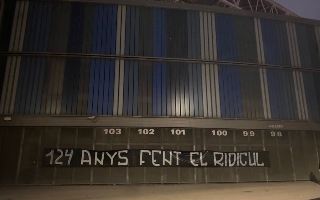
Spain: FC Barcelona may close part of stands over dispute with fans
FC Barcelona has taken a firm stance towards fan groups currently comprising the Grada d'Animació, particularly targeting Penya Almogàvers, Nostra Ensenya, Front 532, and Supporters Barça.
-
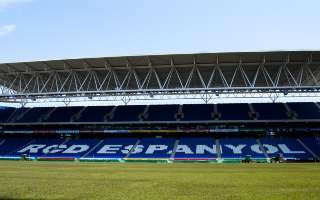
Spain: Penalty for Espanyol for plastic cup thrown from the stands
After the match between Espanyol and Villarreal, a fan threw a plastic cup from the stands, which hit referee Alejandro Quintero González. The incident was investigated by the RFEF Disciplinary Committee, which has already issued its decision.
-
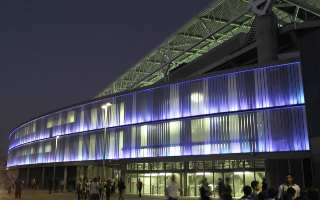
Spain: Will Disciplinary Commission close RCDE Stadium?
On September 26, after the match between RCD Espanyol and Villarreal, a plastic cup thrown from the stands struck referee Alejandro Quintero González. The case is currently being investigated by the Disciplinary Commission, and a decision is expected in a few days.
-
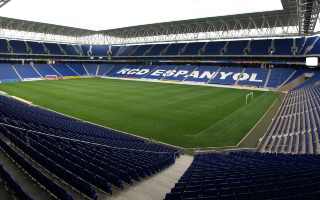
Spain: Music arrives at RCDE Stadium
The calendar of Espanyol de Barcelona's state-of-the-art stadium will combine league matches and concerts from 2025 on. The agreement with Concert Studio and Produceme makes the stadium the second largest music event venue in Barcelona, with only Montjuïc ahead of it.
-

World Cup 2030: Spain selected 11 stadiums. Which ones are missing?
By July 31, Spain will present to FIFA the stadiums that, along with venues in Morocco and Portugal, will be part of the 2030 World Cup. The idea of proposing as many as 13 arenas was rejected, and ultimately, only eleven will be presented.
-

Spain: Girona to play in Barcelona? Club considers all options for Champions League edition
Girona has officially received approval to participate in the 2024/2025 Champions League. The Spanish club and Manchester City share the same owners, which previously raised a conflict of interest. However, UEFA has accepted the participation of both clubs in the upcoming Champions League edition. Additionally, Estadi Montilivi has been approved by the federation to host the matches.
-

Spain: Espanyol sues sponsor and breaks stadium name deal
Stage Front Stadium is reverting to its old name, RCDE Stadium, after Espanyol announced Monday that it has broken its contract with American company Stage Front. The club accused it of failing to fulfill the terms of the contract and withdrawing from the European market, and announced that it will take legal action.
-

World Cup 2030: The race for the final (and more) enters decisive phase
Recent weeks have been tumultuous for the candidate cities, but the next few weeks will be a real storm. Of the 14 Spanish arenas aspiring to host the World Cup, only 11 will be chosen. Bernabéu, Camp Nou and Grand Stade de Casablanca are vying to host the finals, although the Moroccan megastadion exists only on paper for now.

 StadiumDB
StadiumDB